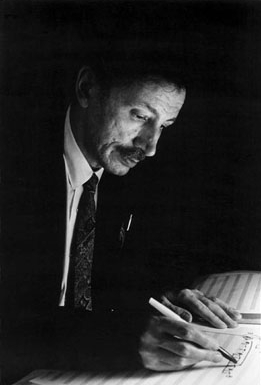This is the fourth short entry dedicated to compositions for solo woodwind. I listened to Alan Hovhaness’ short piece for solo clarinet Lament.

Alan Hovhaness (1911-2000) was an influential and prolific 20th century Armenian-American composer. His large output of works for a wide variety of ensembles has famously combined influences of Armenian, Middle Eastern, Indian, and Asian origin1. Hovhaness studied the musical traditions of India and Japan over a series of trips undertraken between 1959 and 1963, where he immersed himself in the study of Carnatic music in India, the Ah-ak style of Korea, and the gagaku tradition of Japan. In the 1940s, Hovhaness famously destroyed much of his musical output written before his experimentation with these different musical traditions as he was dissatisfied with his early compositions.
The short piece Lament for solo clarinet was composed in 1935, before his trips to India and Asia, but already shows the harmonic influence from these musical traditions. The piece itself makes extensive use of the low register of the clarinet – often referred to as the chalumeau register (from E1-Bb2), named after a precursor to the clarinet. Aside from the use of the chalumeau register, there are some examples of extended techniques for the clarinet including glissandi and register jumps.
The piece itself is a very slow moving largo with a very gradual and limited development in the main thematic idea of the composition. I think the tradition on which this piece is based would not call for a contrasting middle section, as might be the case with other musical forms. From the previous solo pieces I’ve listened to for this listening log this might be first that does not move away from the main theme of the piece, but varies it very subtly throughout the development of the piece. There is variation in the phrasing and dynamics of the piece which hint at dramatic peaks within the composition.
I am a fan of Hovhaness’ music and his extensive musical output means that I’m always finding new pieces to listen to, so I was very happy to see the Lament included in the recommended listening for woodwinds, a piece I’d never heard of before. Hovhaness has been widely recognized for his extensive use of elements from traditions coming from outside of what is commonly called western traditions in classical music. The time from when this piece was written is a good insight into the stylistic development of a young composer who knew the instrument very well.
References: 1. https://www.britannica.com/biography/Alan-Hovhaness Recording: Hovhaness, A., Thorsten, G. 2016. 'Lament'. [online]
